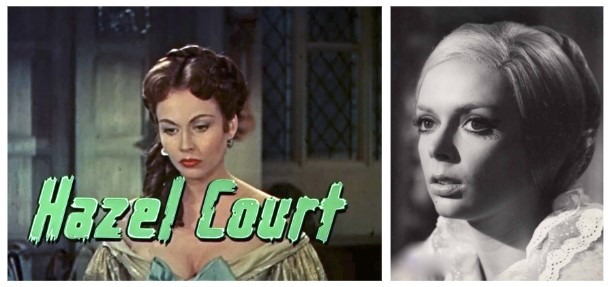Women in Horror: The Evolution of the 1960s Scream Queen

You'll find that 1960s horror cinema radically altered the role of women on screen. The era's scream queens evolved from helpless damsels into complex protagonists with sexual autonomy and psychological depth. Directors like Hitchcock and Wise challenged traditional gender roles through innovative films such as Psycho and The Haunting. The revolution sparked by these pioneering characters and filmmakers laid the foundation for decades of powerful female representation in horror to come.
The Cultural Shift: Women's Liberation and Horror Cinema
Two major cultural forces collided in the 1960s: the women's liberation movement and a revolution in horror cinema. As women fought for workplace equality and sexual liberation in the US and UK, you'll notice this social transformation reflected on the silver screen.
Horror films, traditionally dominated by male heroes and villains, began featuring complex female characters with their own agency and desires.
Groundbreaking films like Psycho and The Haunting broke away from the damsel-in-distress trope, showcasing women who didn't need men to save them. Through the performances of Janet Leigh, Julie Harris, and Claire Bloom, you'll see how horror cinema welcomed bold, sexually liberated female characters without turning their desires into weaknesses. These pioneering roles reshaped the genre and laid the foundation for more intricate portrayals of women in film. This shift in representation reached its pinnacle with Rosemary's Baby, which powerfully exposed medical gaslighting as a tool of patriarchal control.

Breaking the Damsel Stereotype: Pioneers of Female Agency
The emergence of complex female characters in 1960s horror marked a defining moment in cinema history. You'll find that films like Psycho and The Haunting revolutionized how women were portrayed on screen, moving beyond the helpless damsel trope to showcase characters with real depth and agency.
Leading actresses Janet Leigh, Claire Bloom, and Veronica Carlson brought these innovative roles to life, establishing a new archetype for female characters in horror. Their performances demonstrated:
- Strong decision-making abilities, even in the face of terror
- Complex emotional depth and psychological complexity
- Sexual autonomy and personal independence
- Willingness to face consequences of their choices
This transformation wasn't just about adding more Scream to the horror - it represented a fundamental shift in cinema's treatment of women, setting the stage for generations of empowered female characters to come. The shocking mid-film death of Janet Leigh in Hitchcock's shower scene challenged traditional storytelling conventions and proved that even lead actresses weren't safe from subverting audience expectations.

Barbara Steele in a 1965 publicity photo
Sexuality and Power: Redefining the Female Narrative
Major shifts in 1960s horror cinema revolutionized female sexuality on screen, as pioneering actresses like Hazel Court and Barbara Steele portrayed characters who owned both their desires and their strength. You'll notice how these sexually liberated scream queens challenged the genre's traditional female roles, with characters like Marion Crane and Theo displaying complex motivations beyond mere victimhood. While male audiences might've initially viewed these actresses as eye candy, performers like Veronica Carlson cleverly subverted expectations, redefining their characters into empowered protagonists who controlled their own narratives. This bold reimagining of female representation in horror didn't just break new ground - it created a blueprint for strong female characters across all film genres, influencing decades of intricate, nuanced portrayals that followed. Their defiance of 1950s female hysteria marked a dramatic departure from earlier portrayals that often undermined women's credibility through excessive emotional instability.
Behind the Screams: Directors Who Changed the Game
Visionary filmmakers of the 1960s radically revolutionized horror cinema by challenging established gender roles through their pioneering direction. Moving beyond the damsel in distress trope, these directors crafted strong female characters who defied expectations within the horror genre.
You'll find their groundbreaking contributions reflected in:
- Alfred Hitchcock's casting of Janet Leigh in Psycho, creating a complex protagonist who broke traditional molds
- Robert Wise's The Haunting, featuring Julie Harris in a powerful leading role
- Terence Fisher's Hammer Horror films, showcasing the bold performances of Hazel Court and Veronica Carlson
- Mario Bava's Black Sunday, where Barbara Steele expertly portrayed both victim and villain
These directors' revolutionary approach transformed the 1960s scream queen from a one-dimensional character into a multifaceted force, forever changing how women were portrayed in horror cinema.
Beyond the Final Girl: Complex Characters and Rich Storytelling
Breaking away from traditional horror tropes, 1960s scream queens stepped into roles that showcased psychological depth and narrative complexity. You'll notice how female characters in horror evolved from helpless victims into strong female protagonists who drove the narrative forward through their choices and actions.
While final girls like Laurie Strode and Sidney Prescott later became iconic symbols of survival, the 1960s laid the groundwork for rich storytelling centered on women's experiences. These complex characters paved the way for future horror heroines like Ellen Ripley, reflecting the broader women's rights movement of the era.
Horror movies began exploring themes of autonomy, trauma, and resilience through a feminine lens, proving that the genre could deliver both scares and substance. You're witnessing a metamorphosis that forever changed how audiences view women in horror.
The Lasting Impact: From Psycho to Modern Horror Queens
When Janet Leigh stepped into the shower at the Bates Motel in 1960, she forever changed how audiences and filmmakers viewed women in horror. Her portrayal of Marion Crane in Psycho set new standards for female roles in the genre, inspiring generations of complex characters in horror films like Halloween and Nightmare on Elm Street.
The original "scream queens" of the 1960s revolutionized women in horror through:
- Bold characterization that challenged traditional gender stereotypes
- Multi-dimensional performances that went beyond simple victim roles
- Sexual liberation and agency in their character portrayals
- Complex emotional depth that added richness to the storytelling
You can trace this evolution from Leigh's pioneering performance through Claire Bloom's portrayal of Theo in The Haunting, right up to today's modern horror queens. Their legacy continues to influence how filmmakers craft female characters in contemporary horror.




